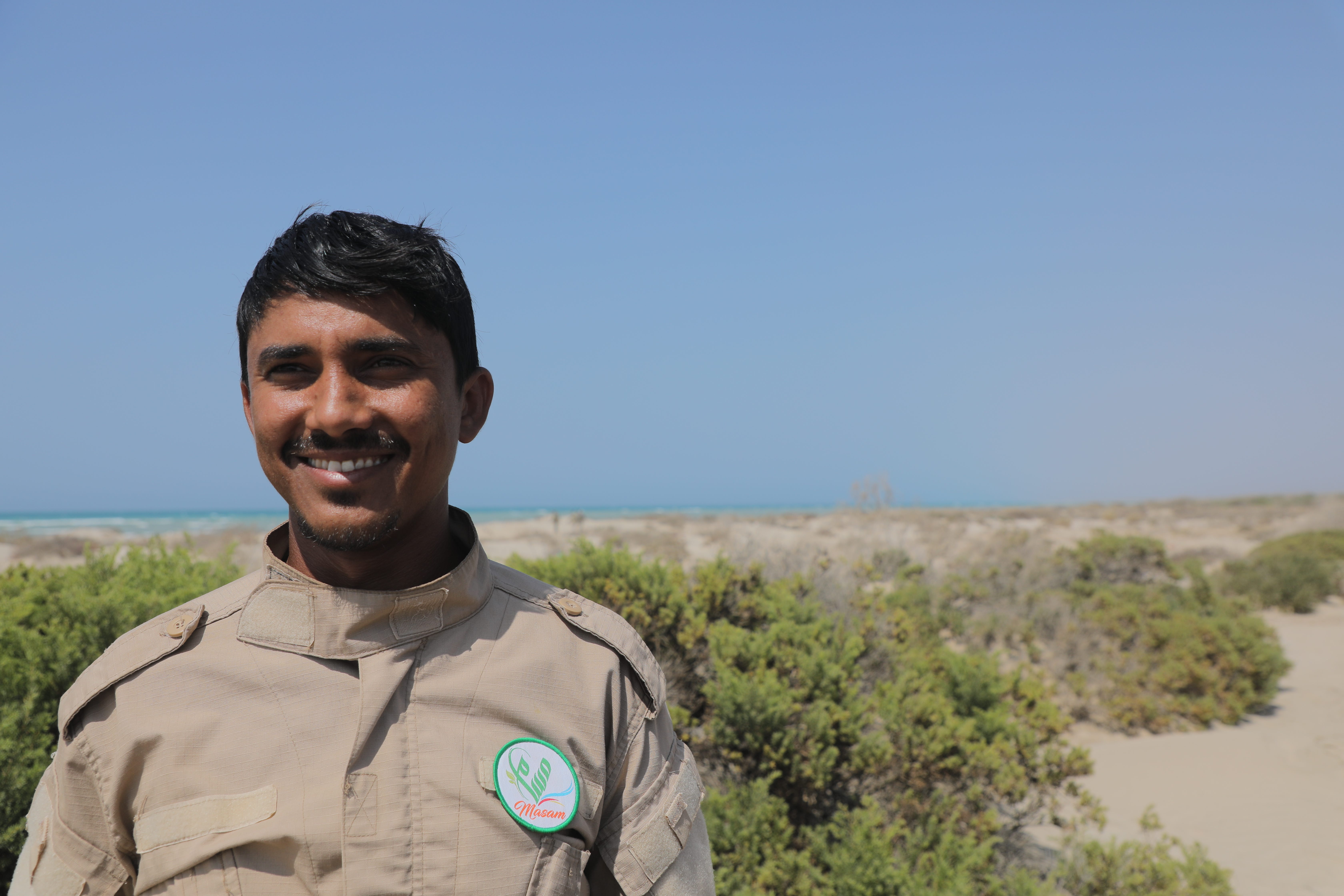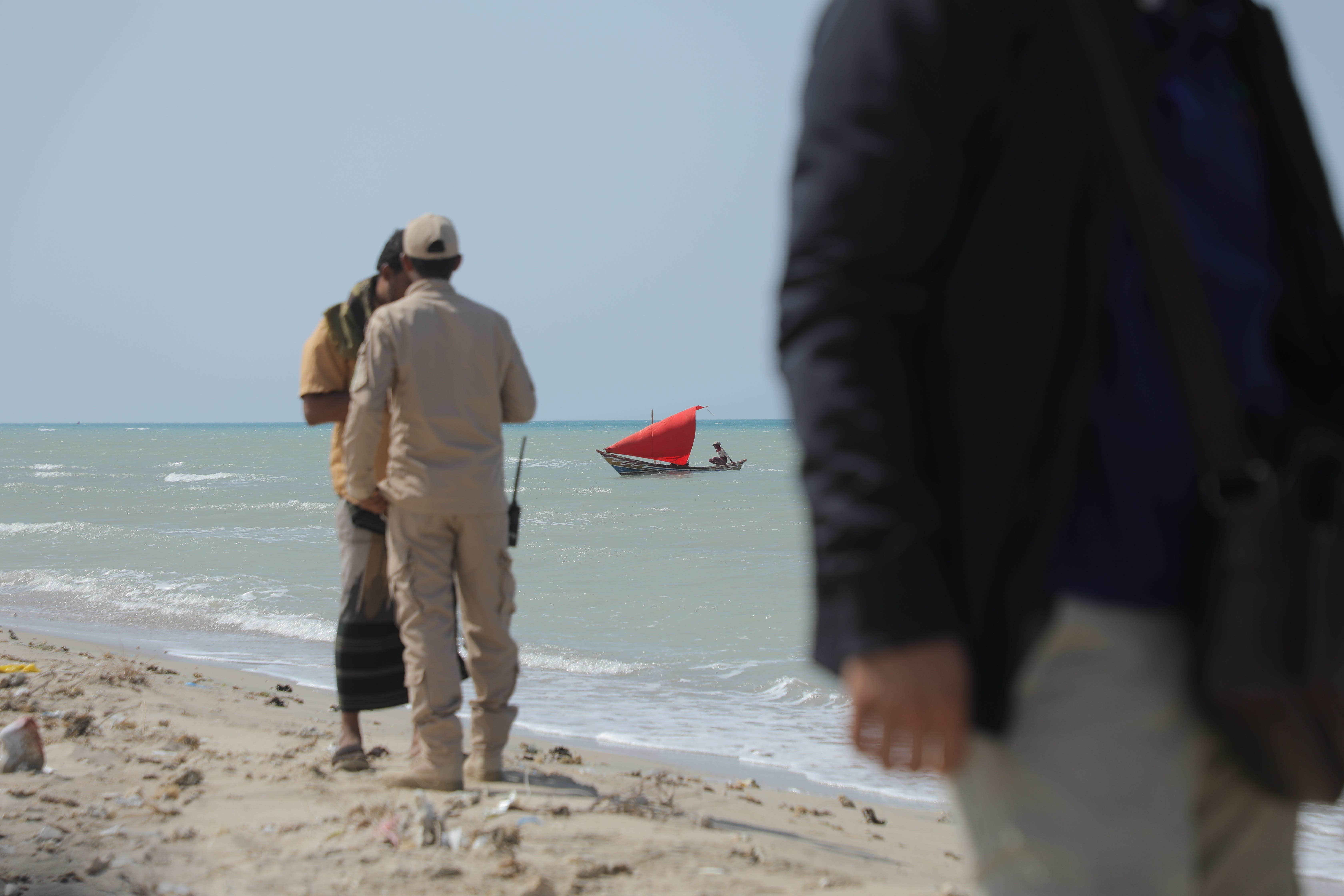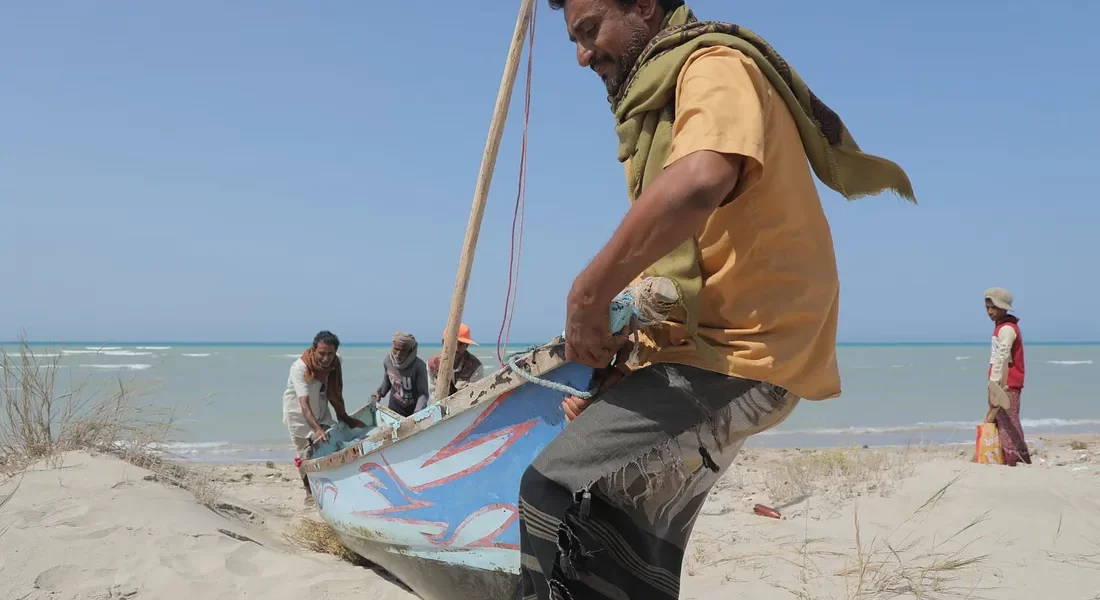Civilians living on Yemen’s latest flashpoint Red Sea Coast have spoken about their fears of becoming victims of the latest surge in violence amid air strikes from both the Iran-backed Houthis and the US-UK Coalition, as they claim Houthis are also preparing for potential offensives by planting new landmines.
Communities living on Yemen’s strategic West Coast have already suffered years of hardship due to the presence of landmines on the coastlines, and sea mines (also called naval mines) and water-borne improvised explosive devices (IEDs) washing up on their shores, as well as intense shelling across moving frontlines.
Since 12 January, the Coalition has launched a series of missile and drone attacks in Hudaydah and Taiz governorates among other areas against the Houthis in retaliation to the group’s attacks on commercial on the Bab al Mandab Strait on the Red Sea.
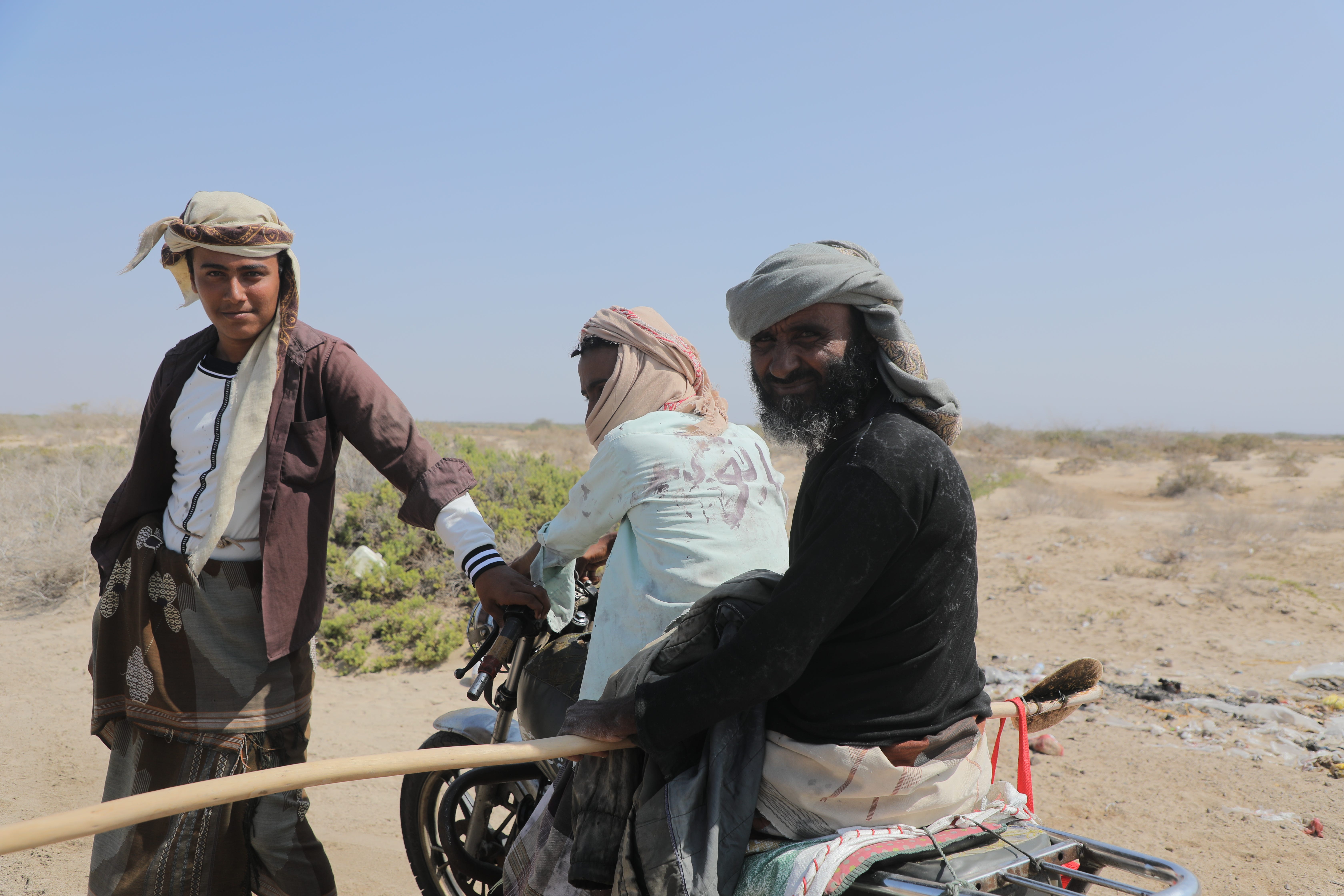
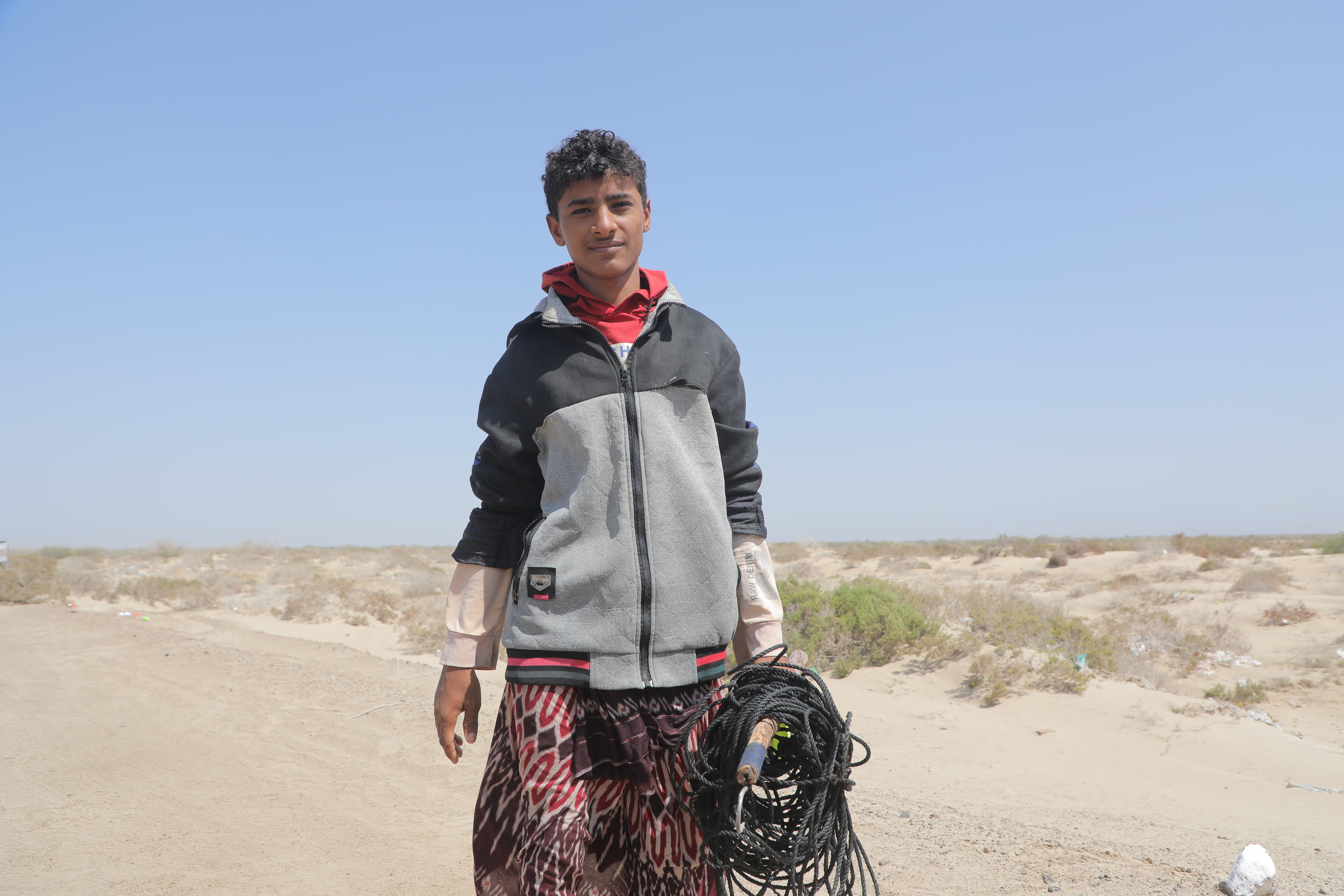
‘New landmines planted along Red Sea’
“We don’t want to be between the Houthi rockets and the US Coalition’s strikes. Two of my neighbours, close to Hudaydah airport, have headed south to Mocha and Aden,” a 37-year-old civilian and father of two living under Houthi territory on the West Coast told Project Masam on condition of anonymity for fears to his life.
The family man claimed the Houthis have been planting new landmines and sea mines in territories they occupy along the Red Sea — after the armed group is already believed to have planted between one and two million of these explosive devices since the begging of the war, according to Ousama Algosaibi, Project Masam’s Managing Director.
Indeed, since at least 2015, Houthis have left a trail of deadly landmines and IEDs as they retreat from or defend critical areas or strongholds. Project Masam has been clearing these explosive items since mid-2018 on beaches, boats, farmland, medical centres and schools, and residential areas, where landmines and IEDs have killed or injured tens of thousands of civilians in the last nine years.
“Houthis are expecting sea-borne incursions. [That’s why] they started to plant new landmines and IEDs in the coastal areas,” the father-of-two said about key areas currently held by the Houthis along parts of the Red Sea coastline.
This claim was reiterated by another young civilian identified only as Abdi, who lives in a Houthi-controlled area near Ad Durayhimi in Hudaydah governorate — a 10mins drive to the Red Sea beaches.
“Our living conditions are very difficult: no one can travel, graze sheep or fish. People are displaced. They [Houthis] have planted new belts of explosives, landmines and IEDs around where we live because they are preparing for an offensive,” Abdi told Project Masam from a safe place.
If proven to be correct, this could further impede on civilians’ lives.
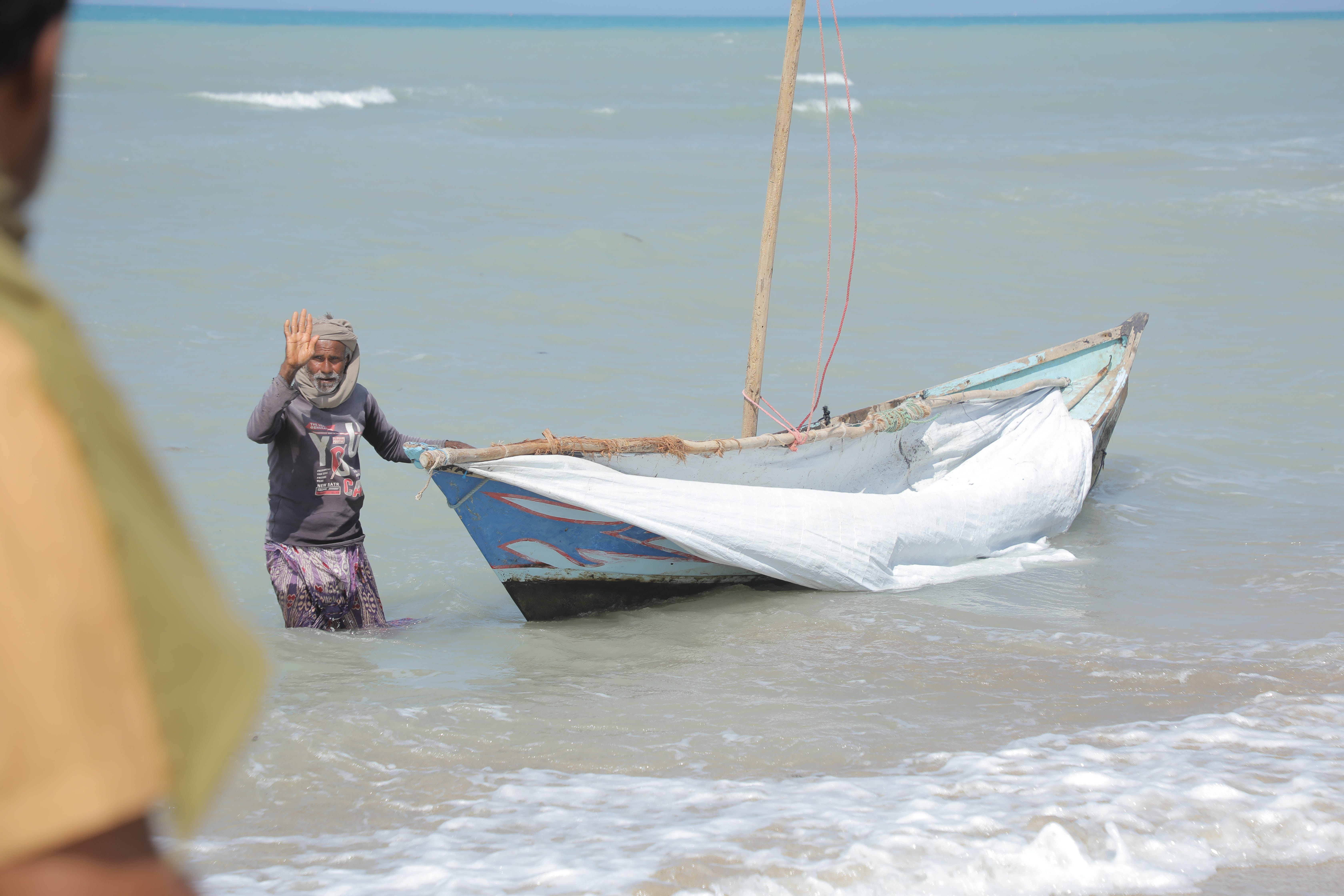
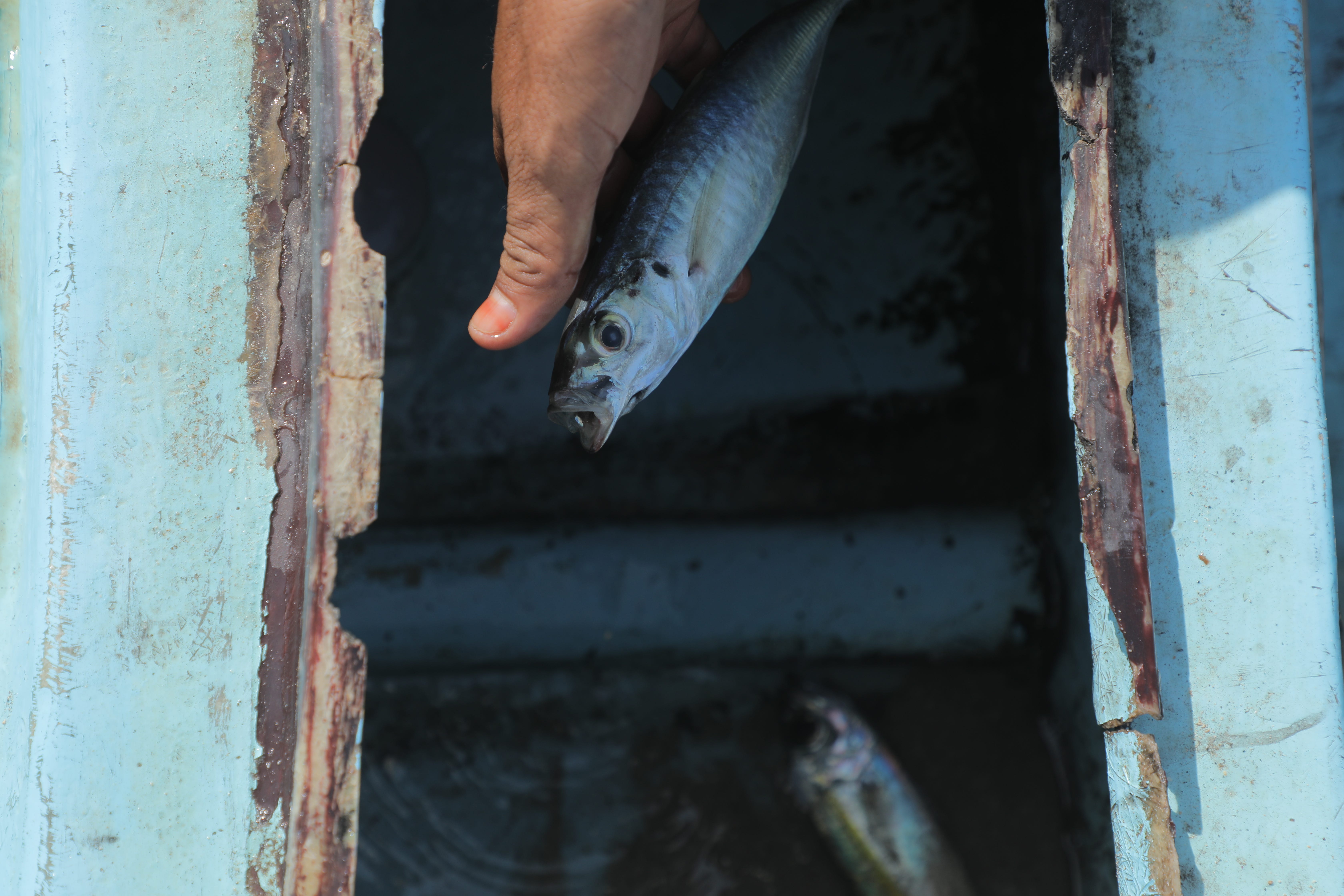
Fishing communities living in fear
Despite the fast pace of emergency humanitarian landmine clearance operations, this new situation on the Red Sea will continue to affect fishing communities, who have already been impacted by the presence of these potentially deadly devices along the coast and in the water for almost a decade.
Fouad Ali Abdullah Dubalah, the General Secretary of Al Mostaqbal Fishery Association, a fishermen union in Al-Khokhah in Taiz governorate, said he represents around 800 members, who are becoming increasingly more upset about the unfolding events in the region.
Dubalah currently lives in the liberated area of Al Khokha, located close to the separation line, along which runs the frontline between the Yemeni government and pro-government forces, and the Houthis and their allies.
Each member has a boat, each boat has ten workers and each worker has a family, Dubalah explained, to highlight the gravity of the situation for the thousands of people concerned.
“Along the West Coast, from Hudaydah city to Bab al-Mandab, people suffer from naval mines because they don’t stay in one place; they are moveable minefields,” he told Project Masam on a safe part of the beach.
“Most of naval mines cannot be seen. They get stuck to their nets. Along the coastline, from Moshag to Qatabah, there were 1,500 incidents. We had plenty of naval mines incidents.”
Some of the members of the association died in such accidents while they were fishing, the union representative added. “We don’t have any rescue team. We only have individual participants.”
For fishermen impacted, the naval mines and landmines have caused internal displacement to Shoqarah in Abyan governorate, to Aden, and to Socotra Island while some of them relocated to Somalia. Instead of fishing in the Red Sea on the Tihamah coast, fishermen have moved to the Arabian Sea, he added.
“We used to produce 150 tonnes of fish but now it is less than 20 tonnes,” Dubalah said, adding that fishermen are now also too afraid to bring their boats to the deep sea.
“The whole community is struggling to feed their families.”
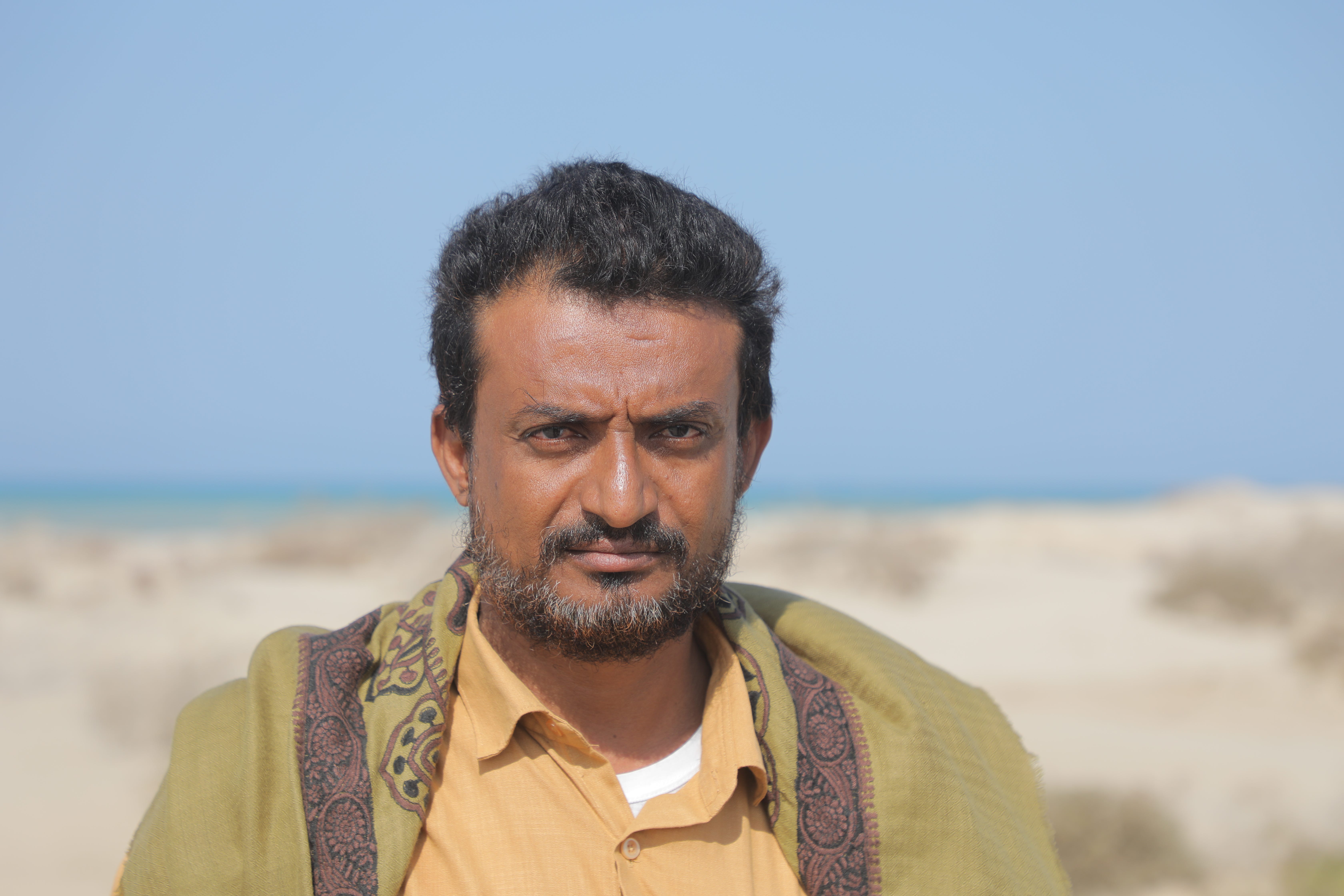
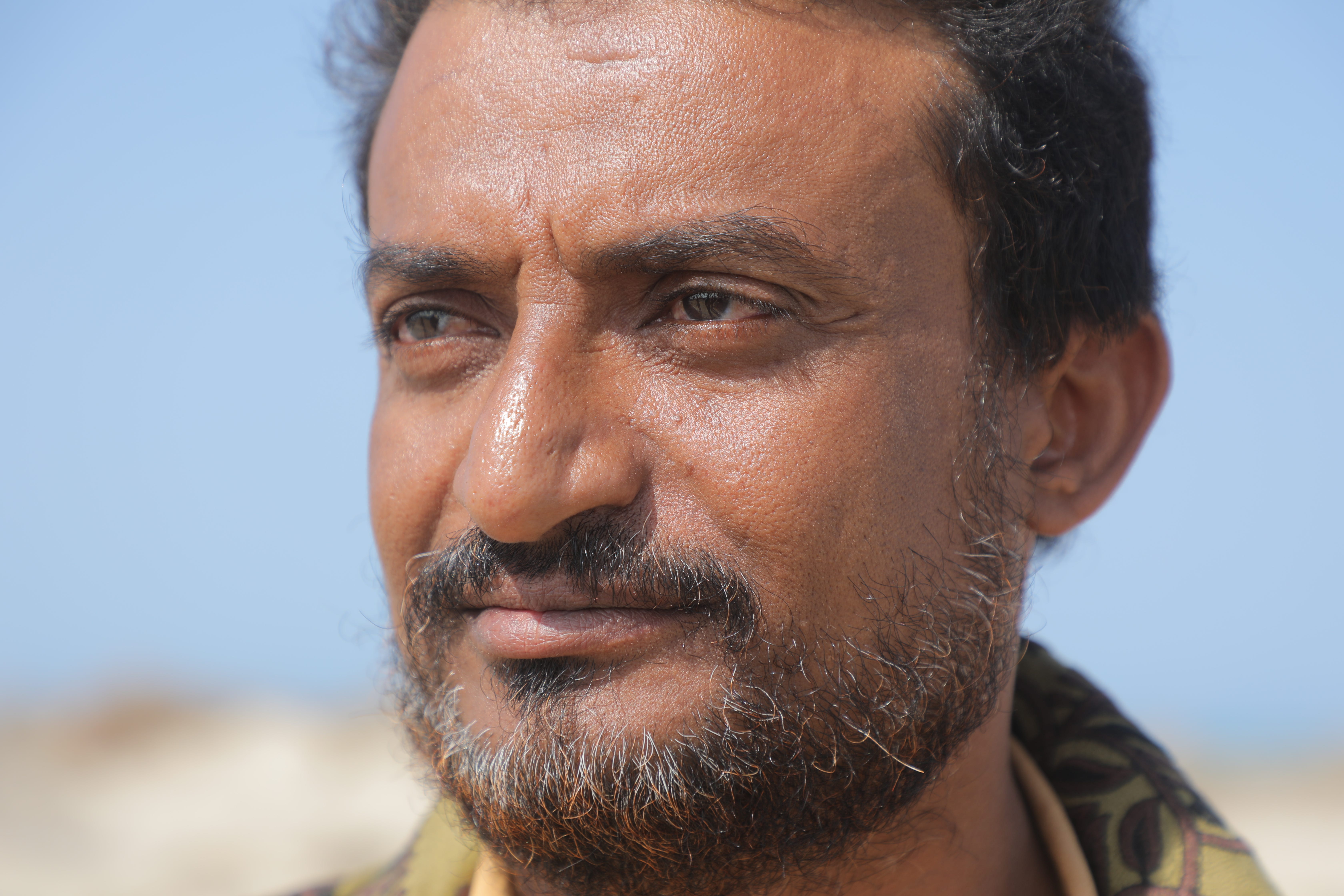
Mine accidents devastating fishing families
Mohamad Essa and Abdullah Omar Mohamed are two fishermen from Al Khokha, who are part of Dubalah’s union.
Speaking on the beach, Essa explained that he has seven children and has been a fisherman for over 40 years.
“The only thing we do for living is to fish. We fear to go for fishing because of naval mines and mines that planted in the coast. It hinders us and leads to deterioration of life.
“Some of our relatives were killed by coastal mine incidents, others became double amputees and the rest chopped up in pieces. The fear and horror has spread among fishermen.”
Mohamed, meanwhile, wanted to speak about one of his friends, who is a father of 10.
“He was killed by a mine-strike in his way to the sea. The elder son had to bear the burden [become the breadwinner]. He is still a child.”
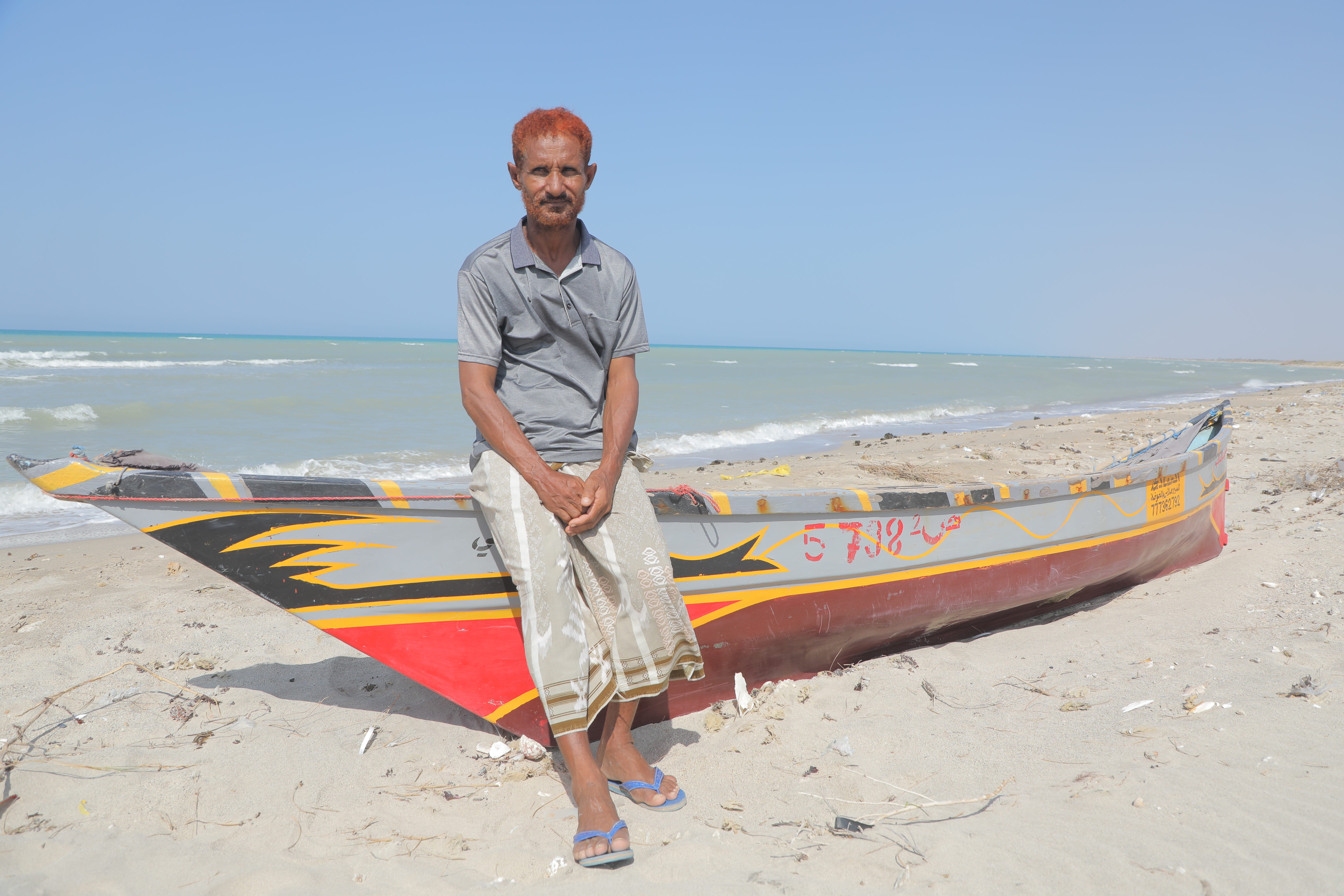
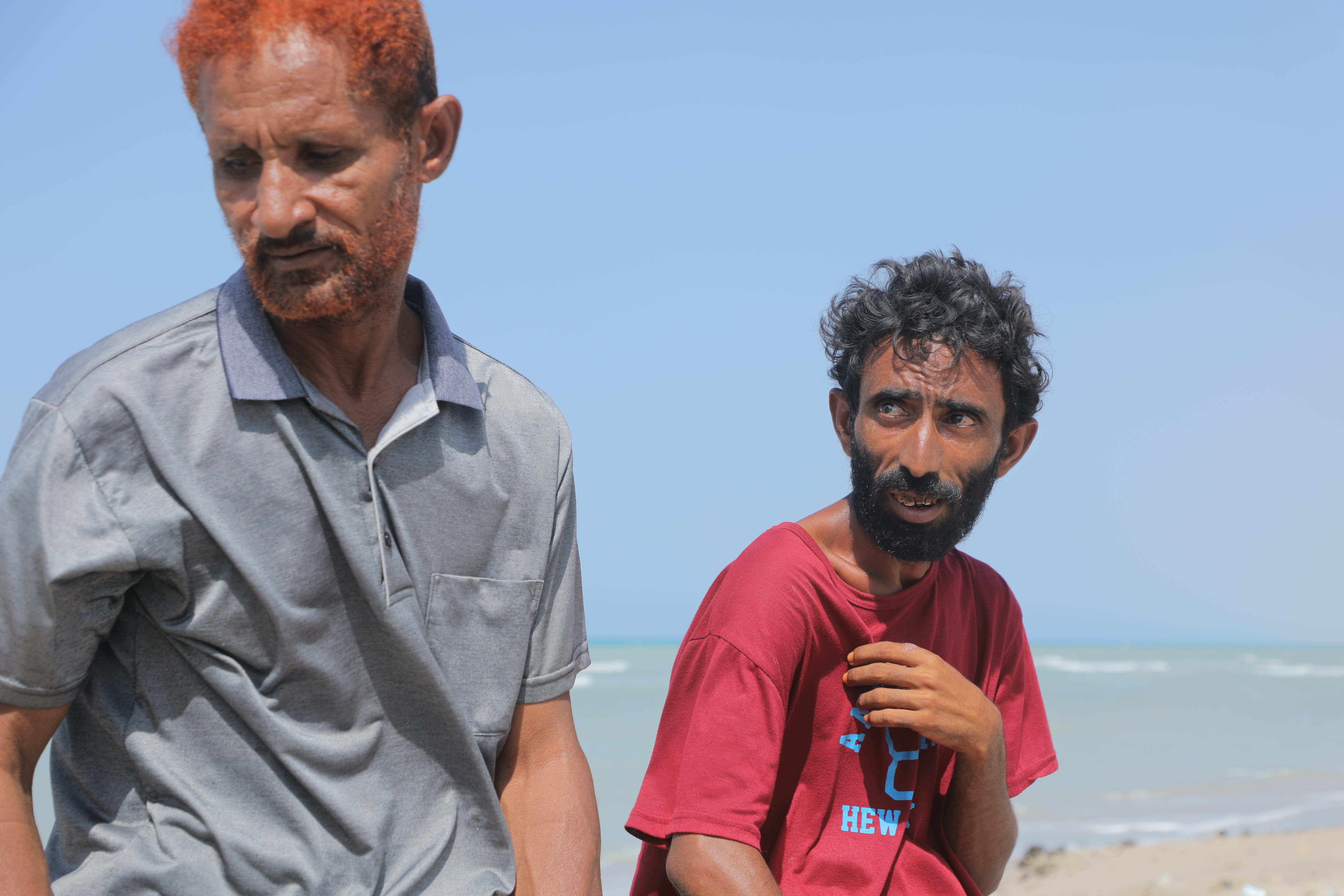
IEDs on boats threaten fishermen too
While Project Masam does not have a mandate to deal with sea mines or IEDs on boats in the water, it has a duty to clear any deadly explosive items on shore — either having washed up inside boats or having drifted on their own.
The latest extra-large water-borne IED to date was found on a typical fishing boat between Murad and Dhubab — with an explosive charge of 25kg of C4 explosives and at least 50kg of TNT.
“It’s the biggest we’ve seen, but then it’s the first Water-Borne IED that we’ve had any involvement with [because it washed up], so they will likely have been using the same type in those boat IEDs for years,” an IED expert working in Mine Action in Yemen, who asked to speak anonymously, told Project Masam.
“I believe it was abandoned at sea and found on the shoreline at Bab-al-Mandab, presumably it ran out of fuel and power and then drifted ashore”.
Adib Rajad Ahmed Ali, one of Project Masam’s Explosive Ordnance Disposal (EOD) experts said: “When I saw the tip of the EFP [Explosively Formed Penetrator, a form of IED], it was shallow and pointed: I recognised it as a Houthi IED. [It was] Houthi-made. It was the largest I have ever seen.”
Including the steel container, the charge weighed an estimated minimum of 218kg — but Ali said he believes it was closer to 250kg-300kg. The largest EFPs seen to date by Project Masam experts were circa 180mm, while the largest directional charges used by Houthis are around 257mm.

Houthi stamp on latest waterborne IEDs
Ali said that, while the Houthis have been using the same type of bombs on “suicide boats” for years, this was the first time Project Masam had seen and dealt with such a large waterborne IED.
Our IED expert presumed these huge charges could be used in order to target, damage or destroy large vessels (such as warships or commercial ships) in Yemeni territorial waters. Ali explained the armed group were “matching the charge size to the target type”.
Given the “pure shaped” explosive charge and container, its size as well as the 500 litres of petrol discovered on board the boat in 20 litres containers, Project Masam found that this EFP could have had the capacity to puncture the hull of a large ship of “substantial thickness” and continue to cause damage on the inside of the ship after contact.
Indeed, depending on the stand-off distance to the device when it exploded, the blast could have easily opened up the side of a vessel’s hull and set fire to the vessel if the penetrator or heat from the explosion made contact with anything combustible, such as the petrol jerricans discovered on the fishing boat.
Following the discovery of the EFP on the boat, the local community given emergency Explosive Ordnance Risk Education (EORE) awareness.
“After they saw that the boat was dangerous, the fishermen were petrified, and are now scared there will find more of those when they take their boats out to fish,” Fekri Hasan Qasim Naji, leader of Project Masam’s demining Team 28, responded to the emergency report and was first on location, highlighted.
“This community depends on fishing and now they won’t sail further than a few hundred metres and won’t go to the deep sea for fear of being targeted or killed by sea mines or waterborne improvised explosive devices [IEDs], or even air strikes. Because of this, their trade is suffering.”
Project Masam’s EOD team was called to safely remove the IED’s explosive charge from the boat and transport it. It was demolished on 22 January.
